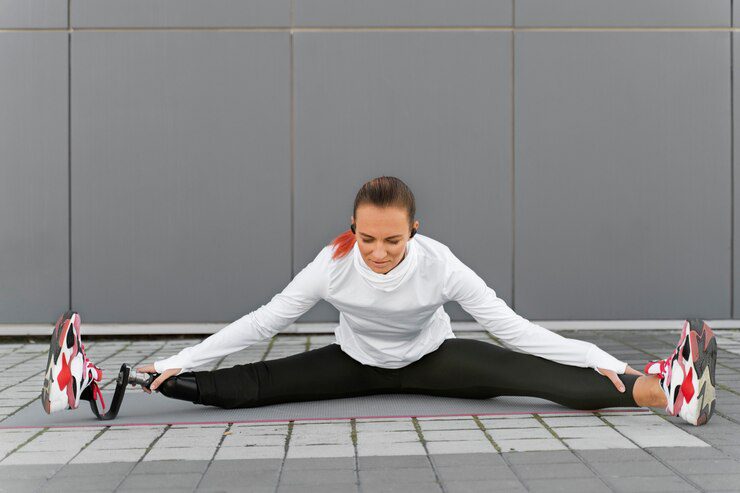In recent years, more and more athletes have discovered the incredible benefits of yoga. Whether you’re a runner, a swimmer, or a weightlifter, integrating yoga for athletes into your training routine can unlock new levels of performance by enhancing flexibility and strength. Yoga isn’t just about relaxation and stretching; it’s a holistic practice that builds mental focus, improves muscle recovery, and prevents injuries.
In this blog, we’ll explore why yoga for athletes is a game-changer, providing practical insights into how yoga enhances both flexibility and strength.
Why Yoga for Athletes?
Athletes often focus on building muscle strength, endurance, and speed. However, this can sometimes lead to tight muscles and a limited range of motion, increasing the risk of injury. Yoga for athletes helps counteract these effects by promoting flexibility, improving joint mobility, and creating balance in the body.
Flexibility: The Foundation of Movement
Flexibility is one of the most important elements in any athletic training program. Whether it’s sprinting, swimming, or weightlifting, flexibility training plays a key role in how efficiently you move. Improved flexibility means greater mobility, which translates to better performance across the board.
Yoga emphasizes stretches and poses that target the entire body, focusing on both major muscle groups and lesser-used muscles. Regular practice of yoga for athletes increases the range of motion in your joints and loosens tight muscles, allowing for smoother, more coordinated movements.
Key Poses for Flexibility
Downward-Facing Dog (Adho Mukha Svanasana): This classic yoga pose stretches the hamstrings, calves, and shoulders, improving overall mobility in the lower body.
Pigeon Pose (Eka Pada Rajakapotasana): Great for runners, the pigeon pose releases tension in the hips and glutes, which are areas that often get tight after high-impact workouts.
Reclining Hand-to-Big-Toe Pose (Supta Padangusthasana): Perfect for increasing flexibility in the hamstrings, this pose also aids in stretching the calves and lower back.
Incorporating these poses into your daily routine will gradually lengthen tight muscles, giving you more flexibility on and off the field.
Strength: Power with Control
While flexibility is crucial, strength is the cornerstone of any athletic endeavor. Athletes often assume that yoga is all about flexibility, but it also builds serious strength. Yoga strengthens muscles through bodyweight resistance, engaging stabilizer muscles that are often neglected in traditional strength training.
Key Poses for Strength
Plank Pose (Phalakasana): Engages the entire body, building core strength, shoulder stability, and leg endurance.
Warrior II (Virabhadrasana II): A foundational pose that strengthens the legs, core, and shoulders while improving overall balance and focus.
Boat Pose (Navasana): A great pose for core strength, targeting the abs, hip flexors, and lower back muscles.
These poses are particularly beneficial for athletes looking to improve endurance and strength without putting too much strain on their joints.
Mental Benefits: Focus and Recovery
Yoga isn’t just about building physical strength and flexibility—it’s also a powerful tool for mental clarity and recovery. In the fast-paced world of sports, mental resilience is just as important as physical stamina. Through breath control (pranayama) and meditation, yoga helps athletes focus, stay calm under pressure, and recover faster between workouts.
Table: Benefits of Yoga for Athletes
| Benefit | Description |
| Increased Flexibility | Elevates range of motion and reduces risk of injury. |
| Improved Strength | Builds functional strength using bodyweight resistance. |
| Enhanced Focus | Boosts concentration and mental clarity during competition. |
| Faster Recovery | Reduces muscle soreness and improves sleep quality. |
| Better Balance and Stability | Strengthens stabilizer muscles, improving overall coordination. |
Incorporating Yoga Into Your Routine
For athletes who are new to yoga, it’s important to start slowly and listen to your body. Begin with just 10-15 minutes of yoga after your regular workout to stretch and cool down. Over time, you can increase your yoga sessions to 30-60 minutes, focusing on both flexibility and strength-building poses.
You don’t need to be an expert to benefit from yoga for athletes. Apps like Yoga for Athletes, Down Dog, and Glo provide easy-to-follow routines that are tailored specifically to athletes.
Conclusion
Yoga is a powerful complement to any athletic training program, enhancing both flexibility and strength while promoting mental clarity and recovery. Whether you’re an elite athlete or just getting started, incorporating yoga for athletes into your routine can significantly boost your performance. With the right poses and consistent practice, you’ll not only reduce the risk of injury but also unlock new levels of power, endurance, and agility.
So why wait? Unroll your yoga mat, take a deep breath, and start reaping the benefits of yoga today. The road to becoming a stronger, more flexible athlete starts here!







